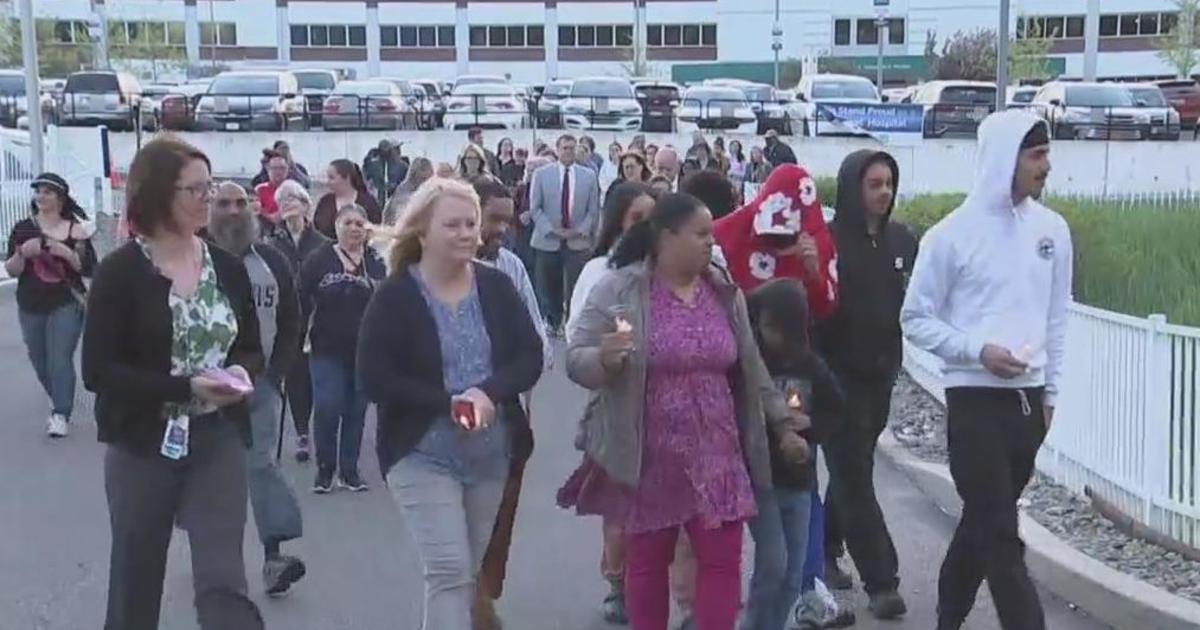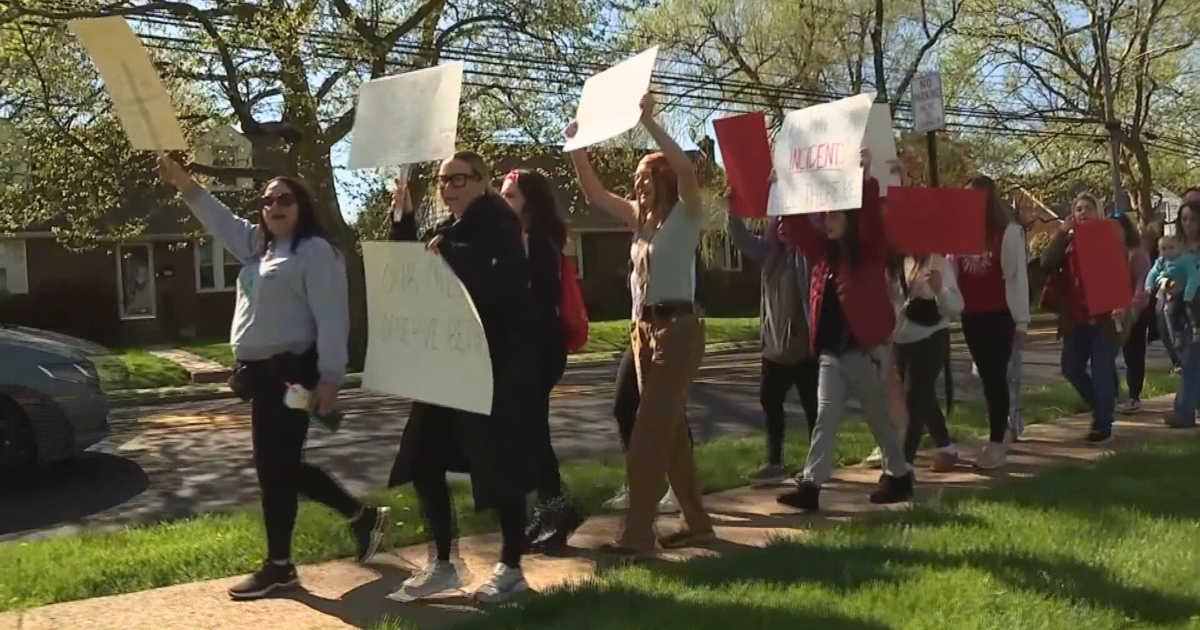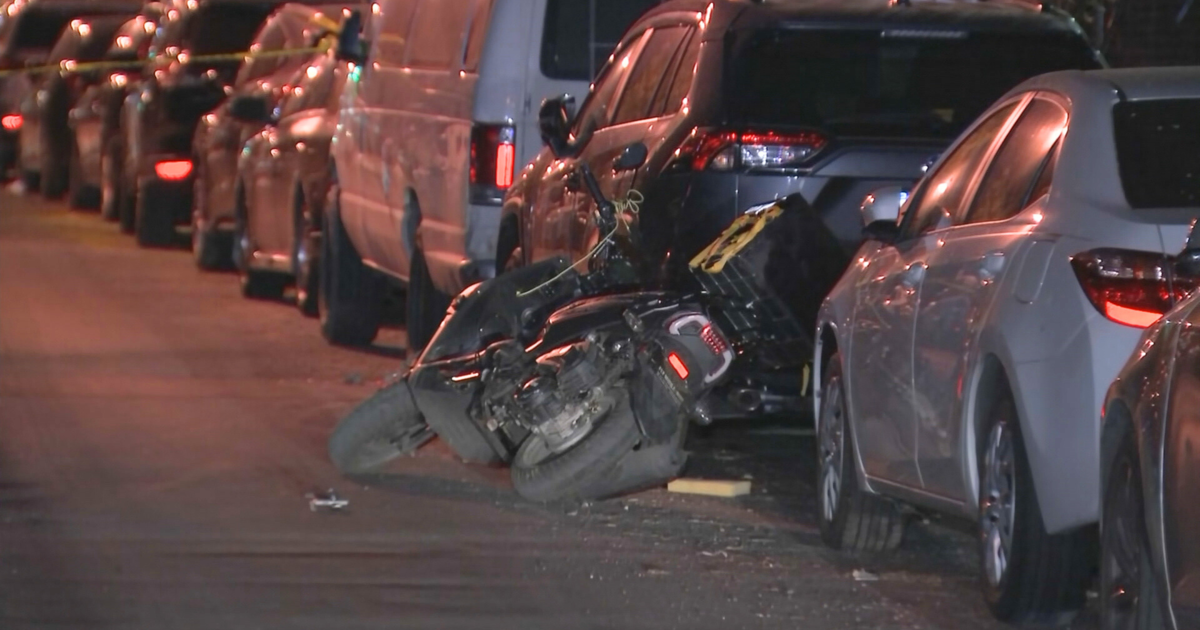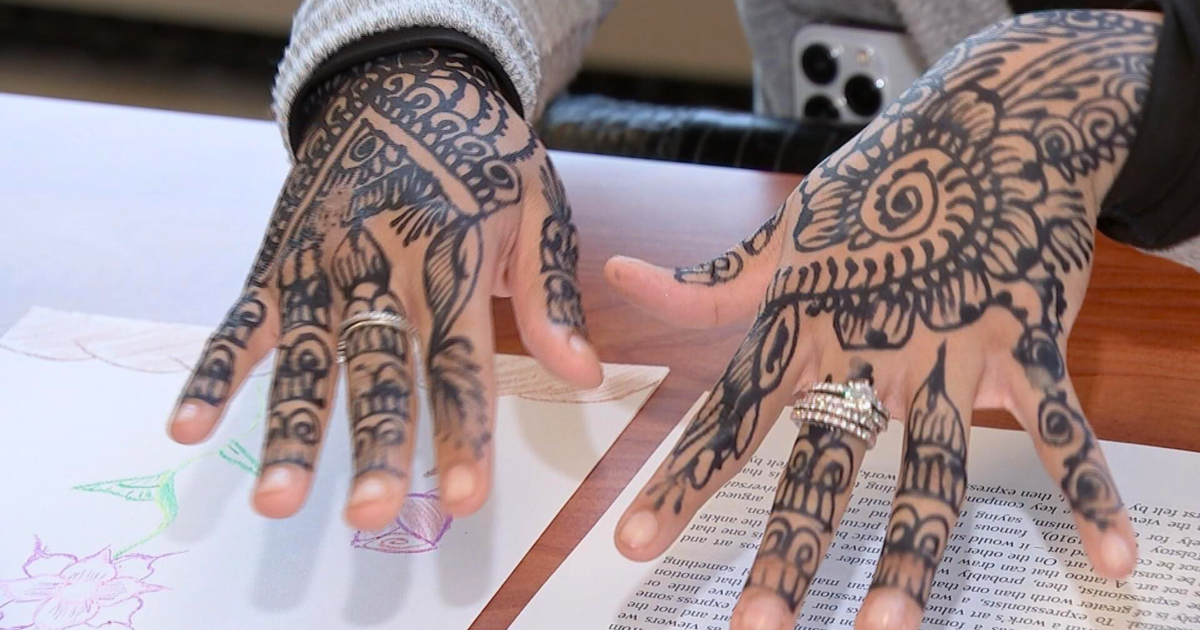Program Takes Middle School Students Through Consequences Of Gun Violence
By Pat Loeb
PHILADELPHIA (CBS) - Dr. Amy Goldberg, Temple Hospital's chief of trauma and surgical critical care, stood in the hospital's emergency room and held up a blunt-looking metal tool so 20 boys, 8th graders from Finletter, could see it.
"We take an instrument like this, lift up on the breast bone and actually cut straight across it," she explained.
Goldberg's description of the extraordinary and somewhat gruesome steps she takes to save gunshot victims are part of "Cradle to Grave," a program she created in 2006, after a spike in teen gun deaths, to show middle school students the true consequences of gun violence.
"They have no idea what gunshot wounds and gunshot violence is really about. None," she says.
Goldberg believes music, movies and video games have given teenagers an unrealistic view of guns and even the rituals that have developed around the mourning of homicide victims reinforce a romantic image of violence.
"Cradle to Grave" seeks to dash that by taking teens through the process a shooting victim goes through, using a case study from Temple's own records, that of 16-year-old Lamont Adams.
Listen to entire interview:
Cradle to Grave Interview
Scott Charles, who runs the program, first tells the story of how Lamont was targeted in the mistaken belief he'd snitched to police about a neighborhood dice game. He tried to lie low; in his fear he even wrote his own obituary on a paper napkin during dinner with his grandmother: "Lamont Adams, son of Dineen Adams and James Mathis, is gunned down in North Philly."
When he ventured out the next night, as Charles tells the Finletter students, he was shot 14 times.
The group then moves to the E.R., where Goldberg gives her demonstration. First she shows the breathing tube used to open his mouth and restore his respiration but further examination found two of the bullets had collapsed his lungs so she made incisions in his chest to directly insert tubes to drain the blood and inflate the lungs.
"We noticed he had no pulse," Goldberg continued. "That meant that his heart had stopped so we needed to act fast."
Goldberg then describes the surgery done on the spot-- an incision in his chest, the insertion of a rib spreader-- which revealed holes in his heart from the bullets. That, she said, meant they had to insert catheters in his femeral vein to infuse liquids and try to clamp the holes; then, the cut to the breast bone so they could compress his heart with their hands.
"And in spite of everything we tried to do," she told the students, "he died."



